Top 10 movies filmed in Florence
1. La Meglio Gioventu’ – The Best of Youth (Mario Tullio Giordana, 2003)
A unique and marvelous 6-hour-long epic filmed in various regions of Italy, including Florence, which chronicles the ups and downs of an Italian family, focusing primarily on two brothers, Matteo (Alessio Boni) and Nicola (Luigi Lo Cascio), with, in the background, the socio-political turmoil and challenges from the late 1960s into the early 2000s that Italy witnessed, including the Arno flood, riots and mafia scandals.
The scene in Florence is set during the big flood of the Arno river in 1966.

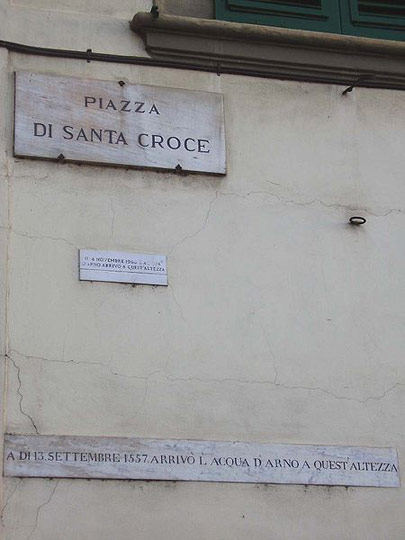
2. Obsession (Brian de Palma, 1976)
Several of Florence’s landmarks are the setting for this psychological thriller directed by Brian de Palma (1976).
The plot revolves around the successful New Orleans businessman Michael Courtland (Cliff Robertson) who is shattered by the tragic death of his wife and nine-year-old daughter. Ten years later, while on a business trip in Italy, he meets a woman who looks exactly like his wife in the beautiful Church of San Miniato a Monte.
The Church of San Miniato a Monte, seen at the beginning of the film and which has a significant role in the plot, was only filmed from the outside. The inside scenes are actually filmed in another church, as the crew did not get permission to film inside the San Miniato church. Apart from the Church of San Miniato a Monte, filming locations in Florence include the Piazza della Signoria and Ponte Vecchio.
3. A Room with a view (James Ivory, 1986)
This British drama, adapted from the homonymous novel by E.M.Foster, about a young Englishwoman Lucy Honeychurch (Helena Bonham Carter) touring Italy with her older cousin (Maggie Smith) uses many of Florence’s landmarks. First there is the room mentioned in the title, with a view over the Arno and the Ponte Vecchio, which is actually made up of three locations, one of which is a room of the former Pension Quisisana, which has now become room 414 in Hotel degli Orafi.
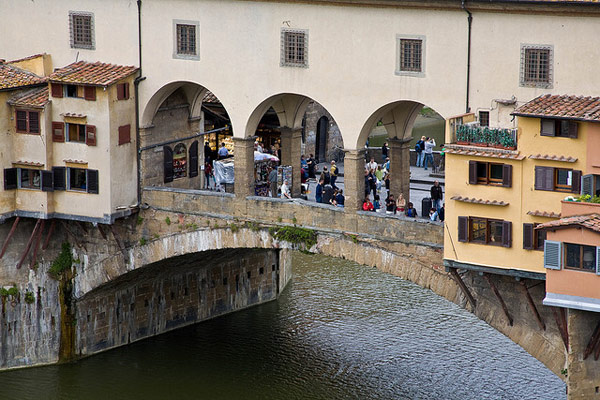
Other interior scenes of the room were filmed on the terrace of a private apartment in Florence and in the eighteenth-century Villa-Fattoria di Maiano, a beautiful estate between Fiesole and Firenze, which was used as the set for Tea with Mussolini (see further), as well.

The scene where Lucy faints, witnessing a bloody knife fight between locals, is filmed by the Neptune Fountain (Fontana di Nettuno), Piazza della Signoria. See also: Top 10 most beautiful piazze of Tuscany.
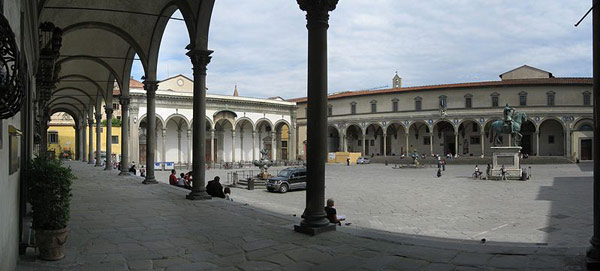
Other Florentine filming locations in this movie include: the statue of Grand Duke Ferdinand in the Piazza della Santissima Annunziata and the monument to Dante inside the Church of Santa Croce. While the latter is the burial place of many illustrious Italians, such as Michelangelo, Machiavelli, Rossini, Galileo and Foscolo, Dante Alighieri was not actually buried here, but in Ravenna, and only has a monument here.
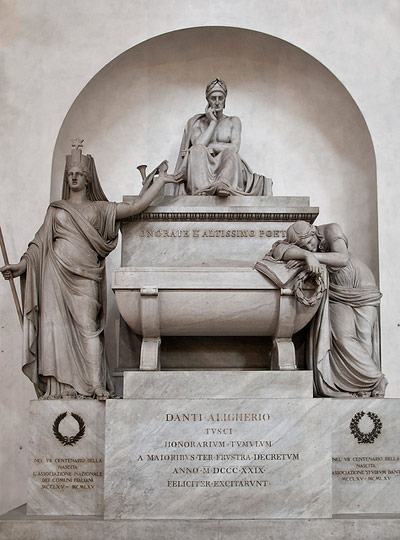
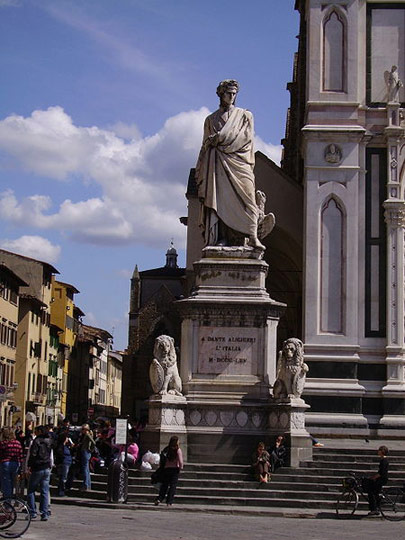
4. Hannibal (Ridley Scott, 2001)
Hannibal, the 2001 American psychological thriller film by Ridley Scott, has nearly a hundred locations among which beautiful locations in Florence. Adapted from Thomas Harris’ homonymous novel, the movie is a sequel to the 1991 Academy Award-winning film The Silence of the Lambs. The novel is actually based on the true case of serial killings of couples which occurred in Florence between 1968 and 1985. An illiterate farm laborer Pietro Pacciani was convicted in 1994 of seven of the eight double killings. However, soon suspicion arose that the ritualized murders were too sophisticated to have been committed by a sloppy individual and were probably the work of a group of society figures.Thomas Harris, sitting in on the original hearings, seemed to share suspicions and made his fictional killer, Hannibal Lecter, a psychiatrist. See: Monster of Florence may still be alive.
In this movie Hannibal (Anthony Hopkins) is now living in Florence, where Chief Inspector Rinaldo Pazzi (Giancarlo Giannini) is investigating the disappearance of a library curator. Ridley Scott, who had never filmed in Florence before, described it as “quite an experience”, especially as the crew was filming at the height of tourist season in some of Florence’s most famous places such as the Ponte Vecchio, the Palazzo Vecchio, the Palazzo Capponi and the Capponi Library (the curator of which is Hannibal masquerading as Dr. Fell, an expert in Florentine art and history), Mercato Vecchio, Mercato Nuovo, the Pharmacy of Santa Maria Novella (where Hannibal buys almond soap and perfumed products for Clarice, the FBI agent) and the Cathedral.
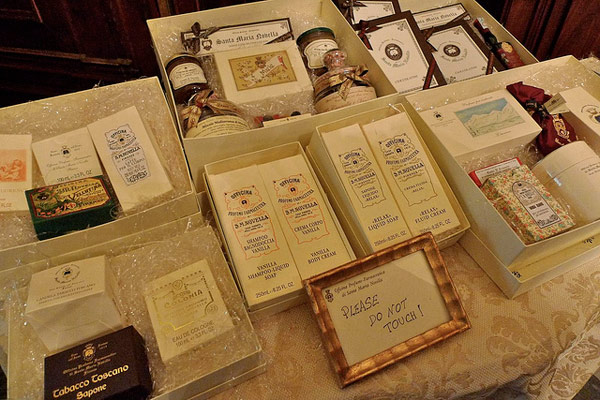
The first appearance of Inspector Pazzi’s occurs in Piazza della Signoria. He meets Hannibal in the Salone del Cinquecento in Palazzo Vecchio.
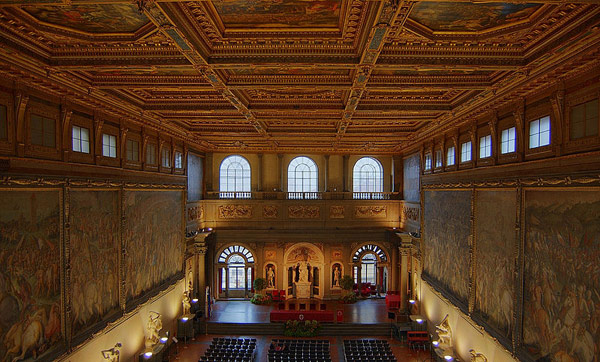
The street café from which Pazzi is spying on Hannibal is Caffè Rivoire, Piazza della Signoria 5.
Hannibal stabs the gypsy Enrico Loverso and washes his bloody hands in the Porcellino Fountain inside the Mercato Nuovo.
5. Amici miei – My Friends (Mario Manicelli, 1975)
Contrary to the film locations seen in A Room with a View and Hannibal where you see mostly the touristic spots of Florence, in Amici Miei leads you into the Florence as seen by the Florentines. One of the very few tourist locations in this movie is Church San Lorenzo.
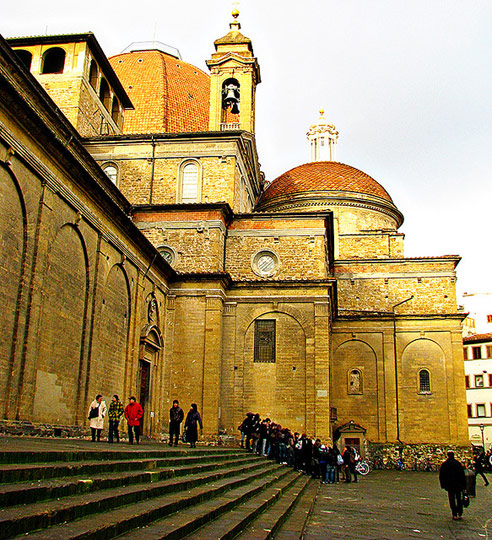
“My Friends” (1975) and “My Friends II act” (1982) are comedy-drama movies directed by Mario Monicelli: the sweet and funny story of four middle-aged friends in Florence. The fearsome foursome who organize together complex pranks (zingarate) in a continuous attempt to prolong childhood and never grow up.
Many scenes of the film (and the follow-ups) were filmed in the bar Necchi in Piazza Nicola Demidoff. The bar became so famous that it was renamed into Bar Amici miei, until it was changed into an American bar at the end of the ‘90s and lost all connection with the movie. Another, less famous florentine bar in Via de’ Magliabechi, in the Santa Croce quarter, appears in the first scene of the film.
6. Tea with Mussolini (Franco Zeffirelli, 1999)
Tea With Mussolini, directed by Zeffirelli, is a touching and nostalgic, semi-autobiographical movie based on the director’s memories of his childhood in Florence before and during World War II. Born in 1923, Zeffirelli was a child born out of wedlock, brought up by a British governess after the death of his mother. That’s how he got involved with the The Scorpioni, a small close-knit group of elderly English and American ladies who taught him the English language and passed on to him their passion for literature. It were The Scorpioni who inspired him Tea with Mussolini. The movie is set in Florence and San Gimignano. The cult scenes in the English Cemetery were filmed in the Cimitero di Porta a’ Pinti, known as “Cimitero degli Inglesi in the centre of Florence.
7. I Vitelloni (Federico Fellini, 1953)
I Vitelloni is Fellini’s third film and his breakthrough film. The 1953 comedy-drama launched the career of Alberto Sordi, one of Italy’s most significant and popular comedians of the post-war period. The shooting was tailored to suit Sordi’s schedule, requiring Fellini and his troupe to follow the actor from town to town across Italy. See also: Alberto Sordi.
8. I Laureati – The Graduates (Leonardo Pieraccioni, 1995)
Four university students in their thirties share the same flat in Florence.
9. Ricomincio da Tre – (I’m) Starting from Three (Massimo Troisi, 1981)
Ricomincio da tre is a 1981 comedy film written, directed and starred by Massimo Troisi, about a young Neapolitan, Gaetano, who decides to leave home, tired of the provincial life. He heads to Florence, to his aunt’s home, overcoming all manner of obstacles on the way.
10. Paisà – Paisan (Roberto Rossellini, 1946)
Part of a trilogy (Rome Open City, Paisan, and Germany Ground Zero), Paisa’ is set during the liberation of Italy at the end of World War II, when Nazi Germany was losing the war against the Allies. This second part is divided into 6 short stories or vignettes, following the allied invasion of the country, from south to north from July 1943 to winter 1944. A major theme is communication problems due to language barriers.
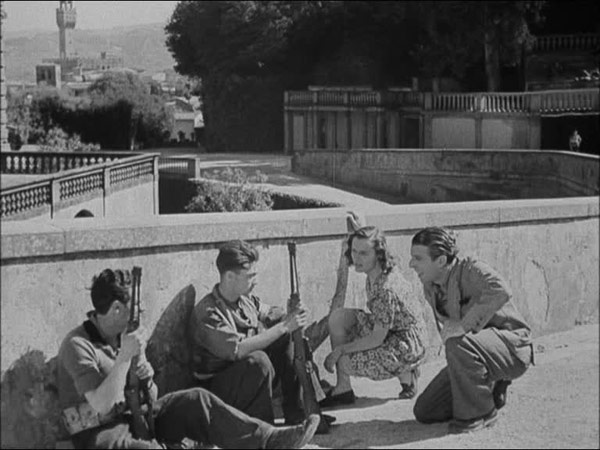
The 4th episode is set in Florence. While the southern half of Florence is liberated, fierce fighting continues across the Arno river between Italian partisans and the Nazis. All the bridges, except the Ponte Vecchio, have been blown up, stalling the Allied advance.
Rossellini hired six writers to write a short script for each episode. In order of episodes, they were Klaus Mann, Marcello Pagliero, Sergio Amidei, Federico Fellini, Rossellini and Vasco Pratolini. Eventually, Rossellini often improvised with the actors, barely following the original script.
You might also like:
Top 9 Historic Cafés in Florence
Gates of Paradise finally to be unveiled after 27 years – Florence’s Baptistery
New Florence Opera House revives the theater as envisioned by the ancient Greeks
Photo credits (top to bottom): Church San Miniato a Monte by Vainsang; 1966 flood photos by Archeologo and Sailko; screencap A Room with a View by themonsterinmyhead; view from hotel degli Orafi by Allan Harris; Fountain of Neptune by digitaura; Piazza SS Annunziata by Marku1988; Dante monument by Yair-haklai; Farmacia by Darren and Brad; Salone del Cinquecento by Listrophy; caffè Rivoire by mberry; Fontana del Porcellino by Mihr*; Church of San Lorenzo by bumpytours; Ricomincio da tre da Razzairpina; Paisa’ by Errix.

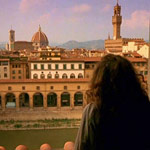
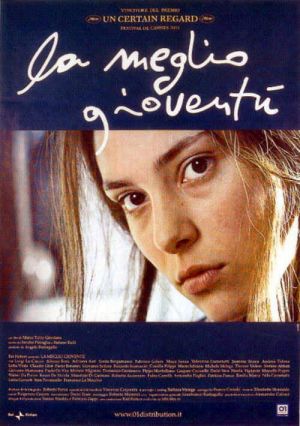
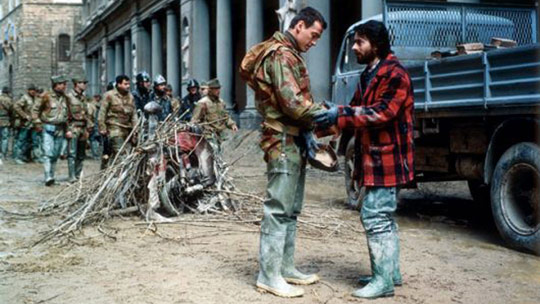


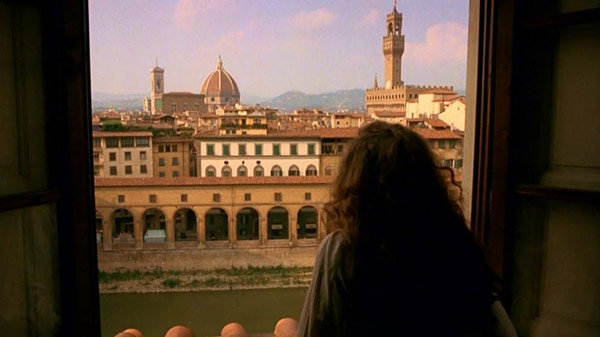
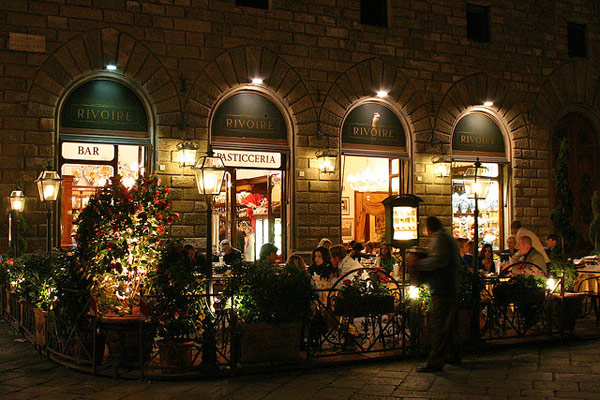

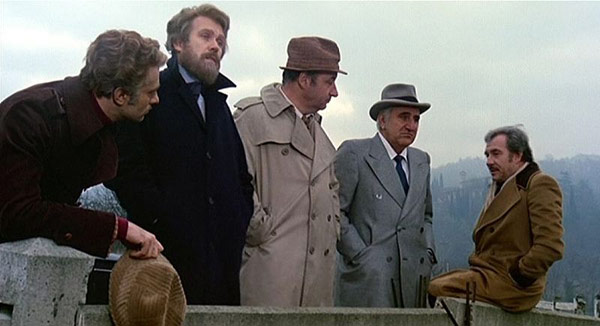
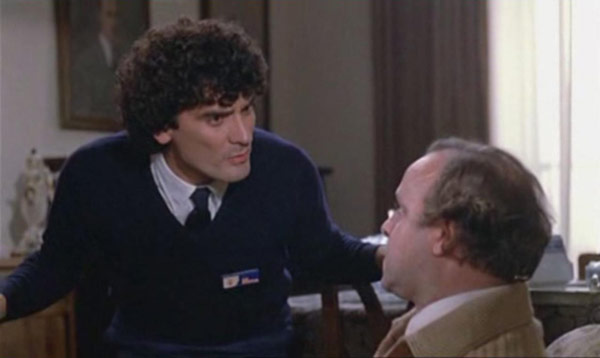
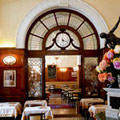
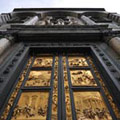
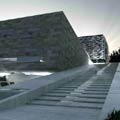
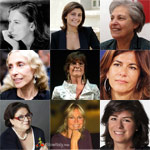
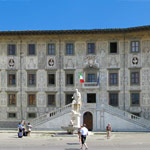
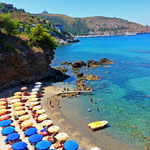
Good films, the only one I have not seen is “Tea with Mussolini”.